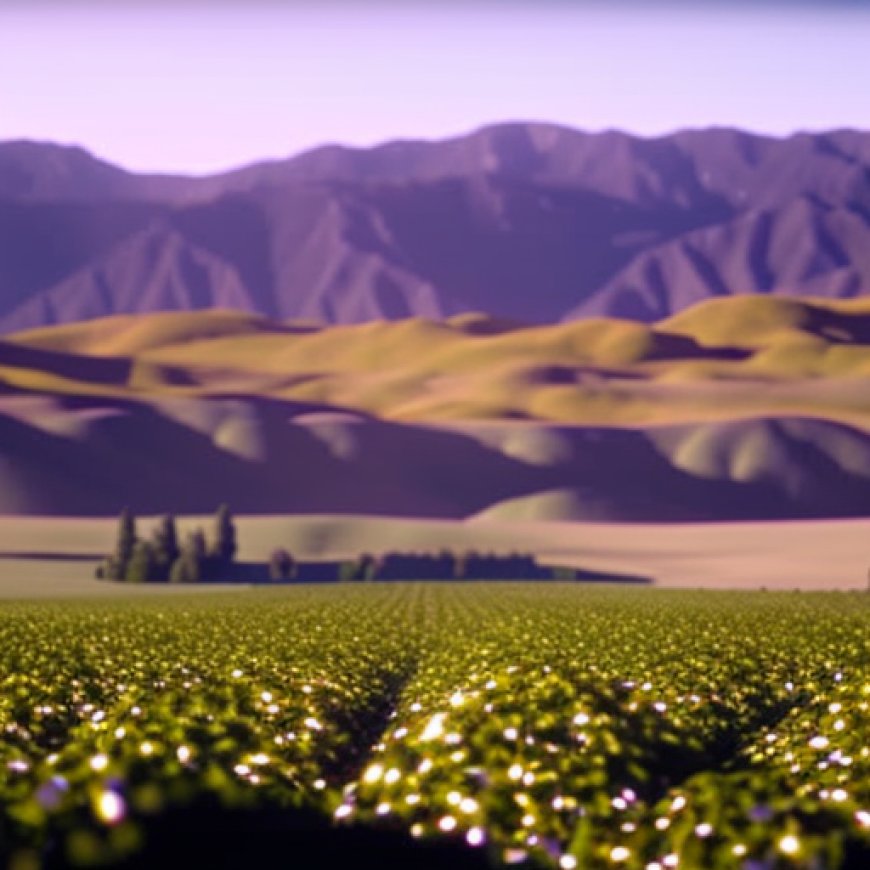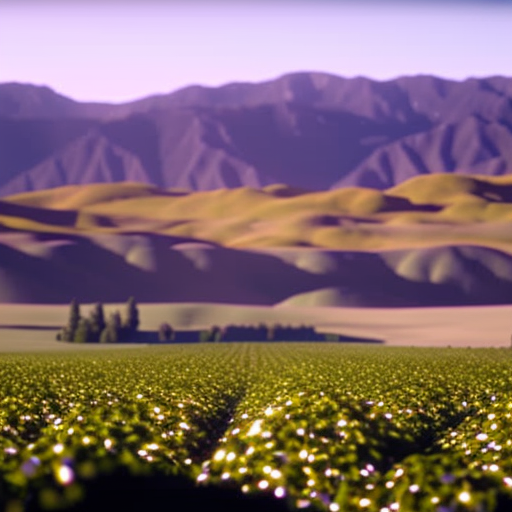California Farm Counties Are Not Even Close to Meeting the EPA’s New Clean Air Quality Standard
EPA Tightens Rules on Air Quality. Can California Farm Counties Clean Up? Civil Eats


Invisible Killer: Particulate Matter and Air Pollution
In early February, the U.S. Environmental Protection Agency (EPA) announced a long-awaited update to rein in an invisible killer: particulate matter—or the mixture of soot, dust, smoke, and liquid droplets that make up the world’s most dangerous air pollution.
Lowering the Standard for Cleaner Air
The EPA lowered the annual standard for particulate matter smaller than 2.5 microns (PM2.5) from 12 to 9 micrograms per cubic meter (µg/m³) of air. The move comes in the wake of dozens of studies that have shown how the tiny particles can travel deep inside the lungs and heart, increasing the risk of heart disease, lung cancer, and strokes.

An EPA map showing which U.S. counties do not meet the new PM 2.5 particle pollution standard. Dark-green counties do not meet the standard.
Challenges in Meeting the Standard
However, based on current air quality monitoring data, much of California—and notably all of the most intensively farmed counties, including those that make up the San Joaquin Valley—will likely not meet the newly updated standard anytime soon.
The San Joaquin Valley Air District, which is home to massive tracts of almond, citrus, produce, and dairy operations, has yet to meet the 12 µg/m³ standard, which the EPA established in 2012. At a recent workshop held by the San Joaquin Valley Air District, a spokesperson for the district described how despite progress lowering PM2.5 levels, “initial modeling completed by CARB [the California Air Resources Board] suggests that attainment of the 2012 standard by 2025 is impracticable.” Instead, the spokesperson said that the district and CARB are revising a plan, and requesting a five-year delay, to reach the now outdated standard by 2030.
Community advocates expressed their continued frustration at the district’s failure to achieve clean air standards. “Back in 2018, we saw the aggregate commitments and weak rules come forward and warned that we would not meet the standard. We said, ‘We need to do more,’ and we were ignored. And here we are today,” said Genevieve Amsalem, research and policy director for the Central California Environmental Justice Network, at the workshop. She calls San Joaquin Valley’s failure to meet air quality standards a civil rights issue: “The people most impacted are more often low-income people of color.”
Agriculture’s Contribution to Air Pollution
The San Joaquin Valley is the largest agricultural producing area in the nation; it produced crops, livestock, and agricultural commodities worth $36.5 billion in 2022. The southern half of California’s 450-mile Central Valley is also home to some of the worst annual air pollution in the nation. Mountain ranges trap emissions from highway traffic, locomotives, municipal composting facilities, tractors, and burning. But agriculture’s full impact is difficult to assess using the data available to the public.
The PM2.5 levels in the valley have decreased in recent years, due largely to state-wide regulation of automobile and industrial emissions. When asked over email about the policy actions that have helped lower emissions, the San Joaquin Valley Air District pointed to “tougher regulations on various industrial sources such as boilers, industrial flares, glass melting furnaces, and engines.” But those changes have only gotten the region so far.
Since 1992, the air district has employed 670 rules to reduce air emissions in the valley, yet only a handful pertain to agriculture. “Ag is the sector that has gotten off the hook,” says Catherine Garupa, executive director of the Central Valley Air Quality Coalition.
As industrial and mobile sources of pollution decline, air quality advocates and members of the public are paying more attention to agricultural emissions, explains Mark Rose, the Sierra Nevada program manager for the National Parks Conservation Association, who has monitored the San Joaquin Valley’s air quality efforts for seven years.
The Challenges Faced by Farmers
Growers are trying to make what changes they can despite challenging economic conditions, says Cork McIsaac, president of Agriculture Industries, Inc., a company that manages over 110,000 acres of farmland throughout the Central Valley. “When you’re in a negative cashflow position already, which a lot of farming is right now, it’s pretty challenging,” he says.
McIsaac and Roger Isom, president and CEO of the California Cotton Ginners and Growers Association and Western Agricultural Processors Association, anticipate that agriculture will be a target for additional regulations to achieve the stricter air quality standard.
“We have the most stringent air quality regulations of anybody in the country for ag,” says Isom, who has spent over a decade working with the state air board and local air district to find ways for growers to lower their contributions to PM2.5, both fugitive dust and nitrogen oxide emissions. While there may not be many rules aimed at agriculture, he says agricultural burn bans, conservation management, and dust mitigation plans, as well as incentives for cleaner truck and farm equipment replacement, have all had significant impacts on farmers’ bottom lines.
Citing the difficulty of securing a burn permit in recent years, McIsaac’s operations have turned to chipping orchard residue, which is more expensive than burning. The practice reduces PM2.5 emissions and can build soil health when the resulting mulch is incorporated into soil.
SDGs, Targets, and Indicators
| SDGs | Targets | Indicators |
|---|---|---|
| SDG 3: Good Health and Well-being | Target 3.9: By 2030, substantially reduce the number of deaths and illnesses from hazardous chemicals and air, water, and soil pollution and contamination. | Indicator not mentioned in the article. |
| SDG 11: Sustainable Cities and Communities | Target 11.6: By 2030, reduce the adverse per capita environmental impact of cities, including by paying special attention to air quality and municipal and other waste management. | Indicator not mentioned in the article. |
| SDG 13: Climate Action | Target 13.1: Strengthen resilience and adaptive capacity to climate-related hazards and natural disasters in all countries. | Indicator not mentioned in the article. |
| SDG 15: Life on Land | Target 15.1: By 2020, ensure the conservation, restoration, and sustainable use of terrestrial and inland freshwater ecosystems and their services, in particular forests, wetlands, mountains, and drylands, in line with obligations under international agreements. | Indicator not mentioned in the article. |
1. Which SDGs are addressed or connected to the issues highlighted in the article?
SDG 3: Good Health and Well-being
The article discusses the health risks associated with particulate matter pollution, which can lead to heart disease, lung cancer, and strokes. SDG 3 aims to ensure good health and well-being for all, and reducing air pollution is crucial for achieving this goal.
SDG 11: Sustainable Cities and Communities
The article highlights the issue of air pollution in California, particularly in the San Joaquin Valley. SDG 11 focuses on creating sustainable cities and communities, including addressing air quality issues and improving waste management.
SDG 13: Climate Action
The article mentions the contribution of agriculture to air pollution, particularly through burning, soil management, and gaseous emissions. SDG 13 aims to take urgent action to combat climate change and its impacts, including reducing greenhouse gas emissions from various sectors, including agriculture.
SDG 15: Life on Land
The article discusses the potential increase in dust and PM2.5 emissions due to the transition of farmland to desert in the San Joaquin Valley. SDG 15 focuses on protecting and restoring terrestrial ecosystems, including addressing land degradation and desertification.
2. What specific targets under those SDGs can be identified based on the article’s content?
Target 3.9: By 2030, substantially reduce the number of deaths and illnesses from hazardous chemicals and air, water, and soil pollution and contamination.
The article highlights the health risks associated with particulate matter pollution, which aligns with Target 3.9 of SDG 3.
Target 11.6: By 2030, reduce the adverse per capita environmental impact of cities, including by paying special attention to air quality and municipal and other waste management.
The article discusses the issue of air pollution in California, particularly in the San Joaquin Valley, which aligns with Target 11.6 of SDG 11.
Target 13.1: Strengthen resilience and adaptive capacity to climate-related hazards and natural disasters in all countries.
The article mentions the contribution of agriculture to air pollution, which aligns with Target 13.1 of SDG 13. Strengthening resilience and adaptive capacity can help mitigate the impacts of climate-related hazards and reduce air pollution.
Target 15.1: By 2020, ensure the conservation, restoration, and sustainable use of terrestrial and inland freshwater ecosystems and their services, in particular forests, wetlands, mountains, and drylands, in line with obligations under international agreements.
The article discusses the potential increase in dust and PM2.5 emissions due to the transition of farmland to desert in the San Joaquin Valley. This highlights the importance of conserving and restoring terrestrial ecosystems, aligning with Target 15.1 of SDG 15.
3. Are there any indicators mentioned or implied in the article that can be used to measure progress towards the identified targets?
No specific indicators are mentioned or implied in the article that can be used to measure progress towards the identified targets. The article provides information about the issues and challenges related to air pollution in California but does not mention any specific indicators for measuring progress.
4. Table: SDGs, Targets, and Indicators
| SDGs | Targets | Indicators |
|---|---|---|
| SDG 3: Good Health and Well-being | Target 3.9: By 2030, substantially reduce the number of deaths and illnesses from hazardous chemicals and air, water, and soil pollution and contamination. | Indicator not mentioned in the article. |
| SDG 11: Sustainable Cities and Communities | Target 11.6: By 2030, reduce the adverse per capita environmental impact of cities, including by paying special attention to air quality and municipal and other waste management. | Indicator not mentioned in the article. |
| SDG 13: Climate Action | Target 13.1: Strengthen resilience and adaptive capacity to climate-related hazards and natural disasters in all countries. | Indicator not mentioned in the article. |
| SDG 15: Life on Land | Target 15.1: By 2020, ensure the conservation, restoration, and sustainable use of terrestrial and inland freshwater ecosystems and their services, in particular forests, wetlands, mountains, and drylands, in line with obligations under international agreements. | Indicator not mentioned in the article. |
Behold! This splendid article springs forth from the wellspring of knowledge, shaped by a wondrous proprietary AI technology that delved into a vast ocean of data, illuminating the path towards the Sustainable Development Goals. Remember that all rights are reserved by SDG Investors LLC, empowering us to champion progress together.
Source: civileats.com

Join us, as fellow seekers of change, on a transformative journey at https://sdgtalks.ai/welcome, where you can become a member and actively contribute to shaping a brighter future.







